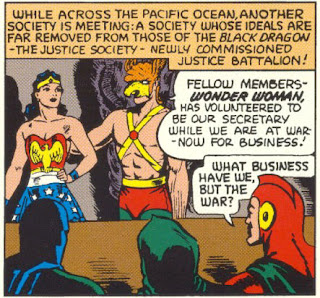I noted this screed by MCU producer Kevin Feige in a Debate Politics post:
So, the notion of representation onscreen, in front of and behind the camera, somebody asked me once, so is Black Panther a one-off? I said, no, it’s not a one-off. This is the future. This is the way the world is, and the way, certainly, our studio’s going to be run going forward, because it brings about better stories. The more diverse the group of people making the movie is, the better the stories.And I wrote:
OK, so all you need to do to make better stories is to make the characters more diverse? It has nothing to do with thinking out the characters in greater detail, right? Like why Black Panther is so torn up by learning of his uncle's death, when the people watching the movie have no reason to believe there was any particular tie between T'Challa and the uncle?Yeah, that's not the way good storytelling works.
Though the post didn't generate a lot of debate, one guy seemed to think that the Panther's crisis of confidence didn't come about not because of the death of his uncle, who committed treason by becoming "radicalized" and trying to sell Wakandan super-weapons to terrorist groups sponsoring Black Liberation. Rather, the poster thought the Panther's crisis evolved because the uncle's kid was left behind in America, rather than being taken to Wakanda-- which led to said kid growing up to become the murderous Erik Killmonger, who challenges the Panther for the Wakandan throne. Now the main scene that sets up T'Challa crisis of confidence is one that takes place shortly after Killmonger has issued his challenge, with the Panther confessing his doubts to his mother. His first words on the subject are as follows:
He killed his own brother and left a child behind with nothing. What kind of king-- what kind of man does this?
So in this section, the killing of the uncle and the orphaning of T'Challa's cousin are on an equal plane. But the future Killmonger is not mentioned again as an object of pity. After the mother says that her late husband was not "perfect," T'Challa goes back to talking about the uncle:
[My father] didn't even give [my uncle] a proper burial. My uncle N'Jobu betrayed us, but my father, he may have created something even worse.
Presumably T'Challa means Killmonger, though the villain shares the same goal as his late father: to put Wakandan super-weapons into the hands of radicals. Killmonger is only different in scope, since he implies that he has terrorist cells all over the world, ready to liberate black people from bondage-- though the nature of that bondage is never spelled out, except with reference to the status of black people in the United States. The mother then reinforces her condemnation of her husband's actions by telling T'Challa: "You can't let your father's mistakes define who you are"-- at which the scene shifts to other concerns.
The strange thing about this scene is that a few scenes previous we've seen a flashback in which one of T'Challa's courtiers, Zuri, reveals that he was present when the father killed N'Jobu, and that he did so to keep N'Jobu from killing Zuri. T'Challa is horrified by the revelation, but like his mother in the later scene, he doesn't seem to think protecting old Zuri's life holds much importance beside the killing of Uncle N'Jobu. Given that no one forces N'Jobu to attack Zuri-- and that T'Challa is quite aware that N'Jobu has betrayed his nation-- there seems to be no real reason as to why the uncle's death rates as such an enormity.
T'Challa's speech with his mother suggests that he may have felt young Killmonger should've been brought back to Wakanda, though he doesn't precisely say so at that point. I rather wonder whether the child, given his vengeful tendencies, would have simply forgiven and forgotten his father's death even if he'd had the benefit of a Wakandan upbringing, but the film doesn't address this possibility.
This raises for me the likelihood that although the real "mistake" of T'Challa's father is that of fratricide, the specific fate of Young Killmonger is less significant than what Killmonger symbolizes: the exile of Black Africans to the land of white devils, specifically because people of their own race sold them for profit. I say "symbolizes" because not once in the film does anyone address the fact that Black Africans made a lot of money selling off the people of neighboring tribes. Yet, if there's any real-world counterpart to Wakanda's fantasy-land of endless wealth, it might well be the empires of such nations as Mali, Ghana, and Songhai, which made themselves rich catering to the Atlantic Slave Trade.



























